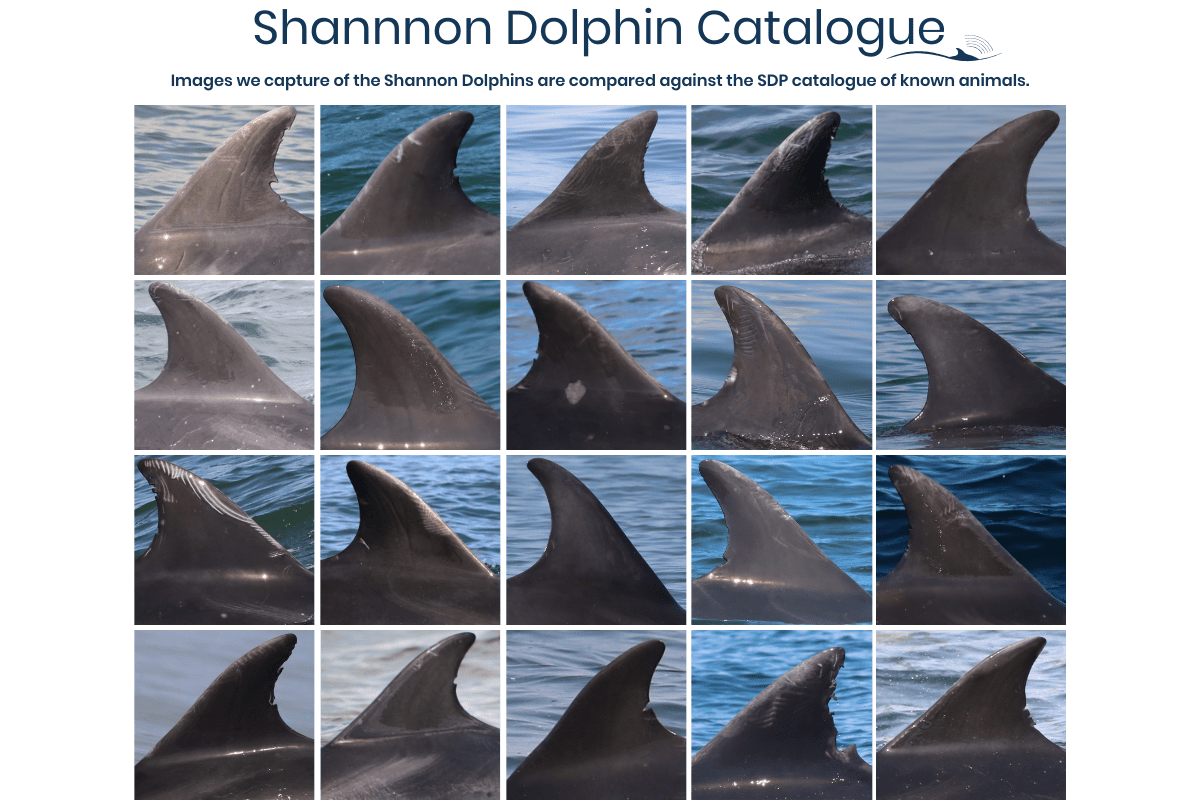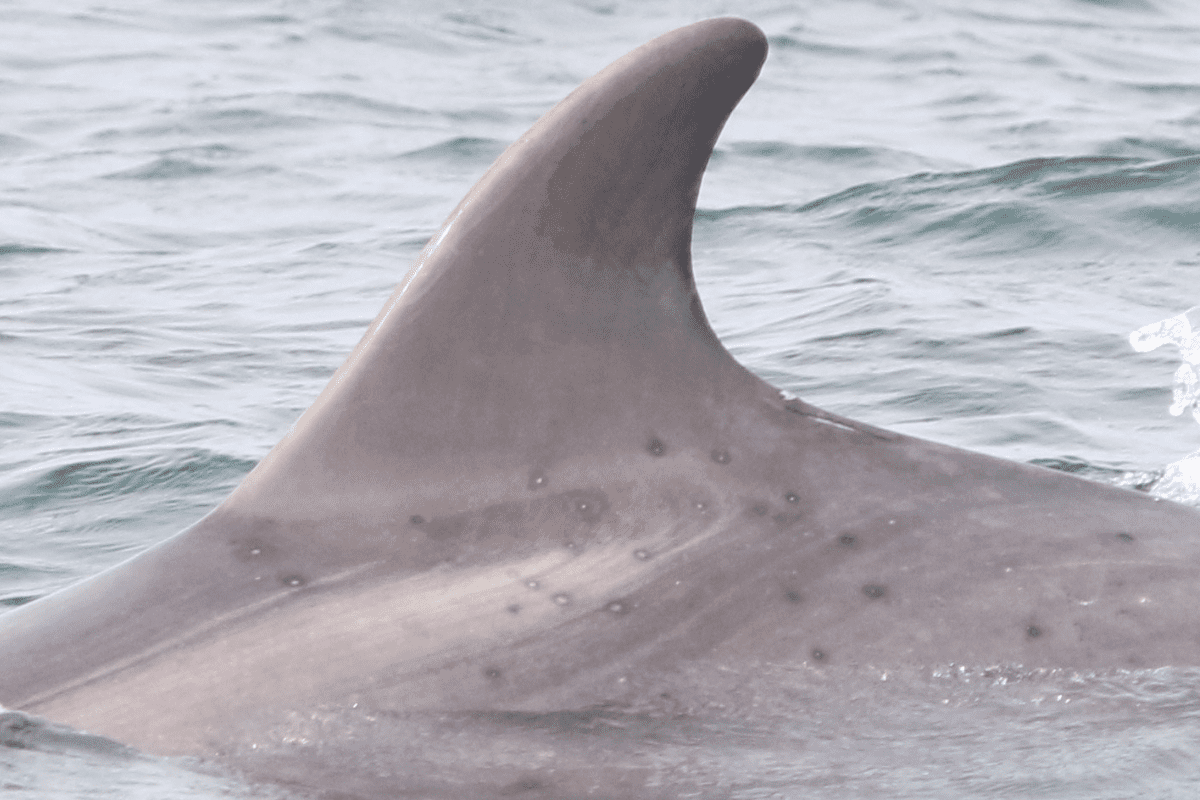How to Recognise a Bottlenose Dolphin:

How Do We Identify the Shannon Dolphins?
If we want to really understand how dolphins live and use the estuary and ensure that conservation efforts are successful, we need to be able to recognise individual dolphins. A technique called photo-identification is used throughout the world on bottlenose dolphins and a wide range of other species.
Photo-identification (photo-ID) is the primary method that the Shannon Dolphin Project employs to monitor the Shannon Dolphins. We use images to identify unique and permanent marks, which can be used to recognise individuals in the population. Bottlenose dolphin photo-ID uses the dorsal fin as the main area of the body with features we can use to distinguish one dolphin from another.

All the images we collect of the dolphins are compared against the Shannon Dolphin Project catalogue of known animals. Thanks to all the images we have collected over the years since the project started in 1993, we have created a Shannon Dolphin Photo-ID catalogue. The original catalogue started with a total of 25 animals identified. To date, we have a catalogue with 182 identified Shannon dolphins.


DORSAL FIN
Why do we use the dorsal fin for identification?
- When the dolphin breaks the surface of the water to breathe it is the most visible part of their body.
- The dorsal fin of each dolphin is unique; dolphins have specific nicks, notches, marks and dorsal fin shapes.
Nicks and Notches
Bottlenose dolphins are born with smooth, unimpaired dorsal fins. They can acquire tears over the course of their lives, mostly due to interactions with other dolphins. Bottlenose dolphins engage in numerous social behaviors, including interactions like play or aggression. As a result of these interactions, they will get nicks and notches on their dorsal fins. They can also acquire them from contact with natural elements such as rocks or submerged vegetation, as well as from man-made elements such as boat propellers or fishing gear. The larger tears are known as notches, while the smaller ones are called nicks. These nicks and notches can change; they can merge, forming one long mark, and additional notches can be gained, altering the appearance of the dorsal fin over time.

Fun fact: Generally males have more nicks and notches than females
Rake marks and scars
Dolphins can also get minor injuries known as rake marks that will fade over time. Dolphins’ skin has fascinating healing properties, causing rake marks and scars to disappear over time, while nicks and notches typically remain. This is why nicks and notches are utilized for long-term identification. Photos of other parts of the body can provide us with useful information and showcase distinctive features of some dolphins; see the examples below.

See Moon’s rake marks on her tailstock

Muddy’s white scar on her tailstock is very visible, she is one of the easiest Shannon dolphins to spot from a distance
Distinguishing similarly marked animals
The position, size and shape of notches is unique for each individual. However, there are some animals that can have very similar notches. These animals make our work a little harder, we need to pay attention to smaller details to identify them. For example: Titan and Sarafina, both have a very similar notch in the middle of their dorsal fin’s trailing edge. Sarafina’s notch is slightly more rounded or U-shape, while Titan’s is more pointed or V-shape.


Distinguishing unmarked animals
Dorsal fin shape: some dolphins can have a very unique fin shape. For example, Talon has a very tall, curved fin that ends in sharp point.
Other ways to identify dolphins
Pigmentation: Dolphin skin pigmentation can also serve as a distinctive feature to help recognize individual dolphins with similar or unmarked fins.
Examples:
Skin colour: Adult males are typically darker than females, and their skin darkens as they age. You can see how much lighter in colour Fiadh is compared to Prometheus.


Sweeps are pale brush-stroke lines that start at the top of the head and end just below the dorsal fin. We can use these sweeps to ID dolphins; unfortunately, you need very good lighting to capture the details of dolphins’ sweeps. Cleo’s sweeps curve and extend to near the dorsal fin. She has a dark line at the start of the rakes which you can see on the left of the picture.
Lesions: Skin lesions can be viral, fungal, or bacterial (mainly viral) and vary in appearance, prevalence, and severity. In most cases, lesions do not result in death; however, they are considered indicators of possible disease as well as a decline in health due to a depressed immune system. In the photo, you can see two dolphins with small orange/yellow lesions caused by an infection of a type of algae known as diatoms.

